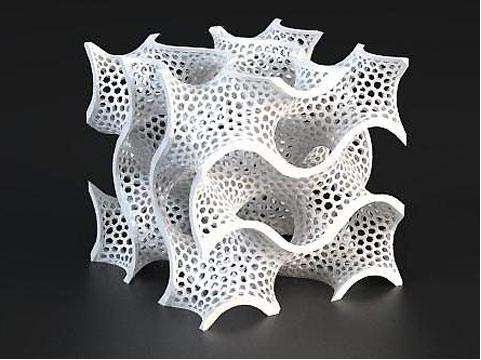
Successful development of titanium alloy reinforcement frame for the largest 3D printing engine
Under the leadership of Wang Huaming's academic team, the National Engineering Laboratory of Large Metal Components Additive Manufacturing of Beijing University of Aeronautics and Astronautics, after more than 20 years of unremitting research, is the first in the world to make new contributions to China's aviation engine technology to catch up with developed countries. The latest news said that it has successfully developed an original engine with the world's largest laser additive manufacturing equipment (forming capacity of 7 meters × 4 meters × 3.5 meters), and the world's largest 16 square meters 3D printing (a large bomber) engine Titanium alloy reinforcement frame. On January 18, 2016, the project “Laser-forming large-scale complex integral component laser forming technology for aircraft titanium alloy” hosted by Academician Wang Huaming won the first prize of National Technology Invention.
According to public information at home and abroad, it is speculated that Academician Wang Huaming has made significant progress in the key components of the new generation of heavy-duty and medium-sized stealth fighter engines in China: high-temperature titanium alloy dual-performance integral leaf discs, using laser rapid prototyping duplex alloy "special heat treatment" The new process, laser additive, produces an advanced aero-engine titanium alloy monolithic disc with gradient organization and gradient properties, with excellent overall mechanical properties. The superior operational performance of a new generation of high-performance military aircraft is strongly dependent on the application of advanced high thrust-to-weight ratio aeroengines, while the integrated blade technology integrates engine blades, discs and other components into a single unit that can significantly reduce the number of parts and reduce the structure. Quality, which improves the thrust-to-weight ratio and reliability of the engine. There is information that each integral leaf disc can lose about 30% of its weight compared to conventional molar joints.
At present, the manufacturing method of the dual-performance integral leaf disc technology mainly adopts a welding method, and the blades and discs of different performances are welded into one whole by linear friction welding and the like. However, the biggest problem with the welding method is that the connecting area tends to be the weak link of the whole component, which is an important hidden danger for the high-speed rotating parts of the aeroengine that emphasize high reliability and long life. With the development and continuous maturity of additive manufacturing technology, it is proposed to directly grow the blade on the disk body, and through the coaxial powder feeding laser cladding method, the boss is pre-processed on the edge of the titanium alloy disk body, and stacked layer by layer. Titanium alloy blades.
After long-term research, the team of Academician Wang Huaming of Beihang discovered that there are two dominant solidification modes for the epitaxial growth of the mobile pool and the heterogeneous nucleation on the surface of the molten pool during the process of manufacturing the titanium alloy laser additive. The control can realize the active control of the solidification grain morphology and mechanical properties of the metal members of the additive manufacturing. The first type of molten pool method enables the member to obtain a directional growth of a full columnar crystal structure, which has excellent high temperature and long lasting creep properties, and the second mode enables the member to obtain an equiaxed crystal solidified structure excellent in isotropic mechanical properties. These two methods are alternately arranged by humans, and a "reinforced concrete" mixed solidified grain structure can be obtained. Such mixed solidified grain structure has not been reported at home and abroad, and conventional metallurgical forging and casting technology cannot be prepared. The technology realizes the precise control of the overall leaf blade and the performance of the disc body, especially the critical transition zone of the disc body to the blade of the whole leaf disc, achieving a smooth and gradual transition of the tissue performance, meeting the requirements of the aviation engine experts.
The team of Academician Wang Huaming of Beihang University also conducted in-depth research on the subsequent heat treatment technology of the dual-performance integral leaf disc technology for laser additive manufacturing. After special heat treatment, the plastic deformation resistance, especially the crack propagation resistance, is extremely excellent, compared with the traditional forged titanium alloy. The fatigue crack growth threshold is increased by 61%, and the fatigue crack growth rate is reduced by more than an order of magnitude. With the gradual maturity of the dual-performance integral fan and high-pressure compressor blade technology for laser additive manufacturing, the high-temperature alloy turbine disk additive manufacturing technology may become the next technical difficulty for the academician Wang Huaming, which is expected to be a hit for China's aviation engine technology. The developed countries have made new contributions.